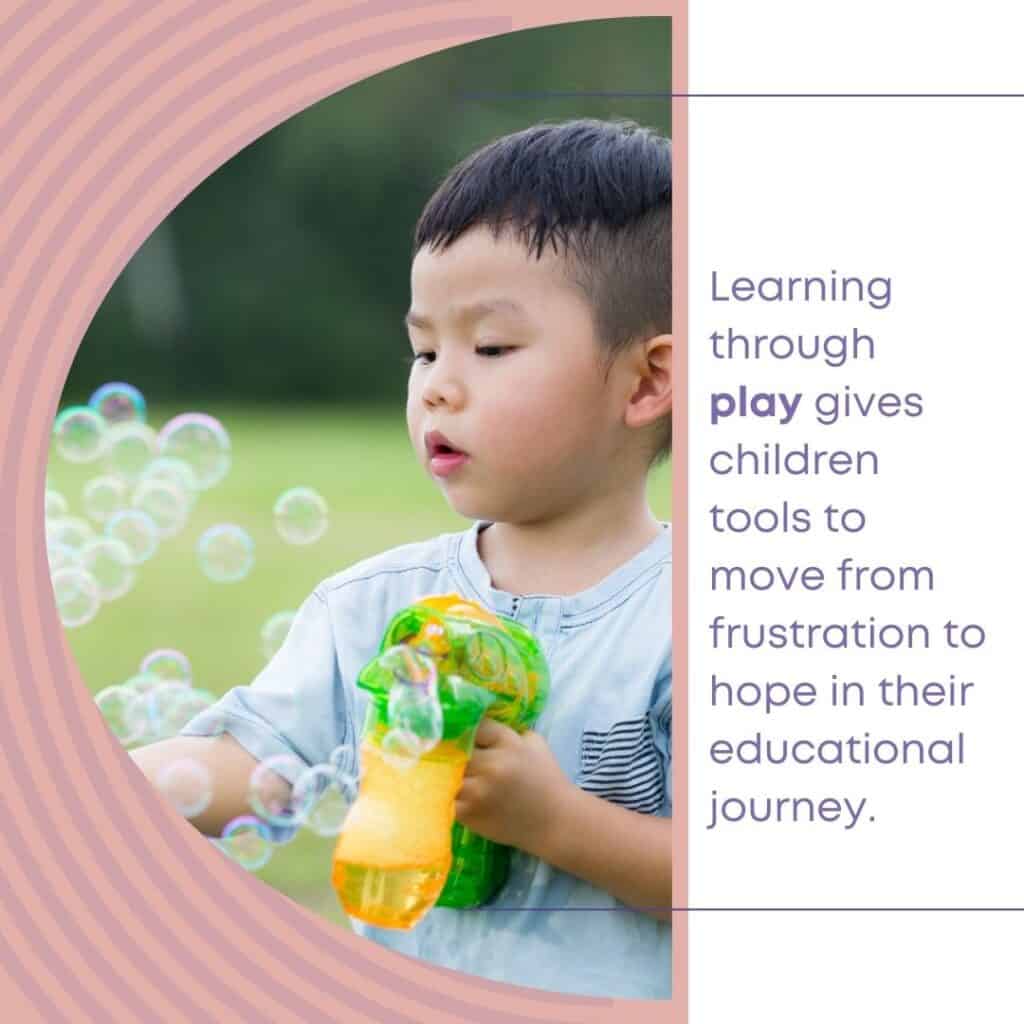When your child learns differently, school can become an unrelenting daily struggle that eats away at the emotional strength of even the most resilient child. Every day, he hears messages from teachers, parents, friends, and even himself to “try harder” and “do his best.” Despite his efforts, he continues to fall further behind the other children who seem to move effortlessly forward on the path of mastery. It doesn’t have to be this way. An integrated educational journey offers a child a different path. Instead of telling a child to work harder or do better, we can draw upon the awareness of God’s wise design, 21st-century science, and the child’s ability to learn through play to give him personalized tools and move him from frustration toward hope.
Understanding an Integrated Educational Journey
There are some truths that guide us as we help a child toward healing:
- We know we are created in God’s image, and that is good.
- We also know that living in a broken world affects our development and how our brains process information and experiences.
- We know God has allowed science a glimpse into how the brain develops, and we have tools and strategies that can lead us toward healing and growth.
Knowing and being aware of these truths are the first steps needed in understanding an integrated educational journey. These truths help us develop an awareness of social-emotional, motor-sensory, and cognitive development, which leads us to see the “why” behind our children’s behavior.
Once we are aware, we can grow in knowledge and skill in responding to and implementing change. With that information, we can integrate mindful principles and practices that lead toward healing and growth.

Learning Through Play Cultivates Development
At the heart of this awareness is the ability to understand how play cultivates the joy of learning and impacts the developmental stages emotionally, relationally, cognitively, and academically. It also leads toward healing and growth.
To begin, we must understand what play is. “Play is a state of the mind that one has when absorbed in an activity that provides enjoyment and suspension of sense of time. Play is self-motivated, so you want to do it again and again,” (Brown, 2010). The goal of the integrated educational journey is to train the brain to treat learning the same way it treats play.
We have over 86 billion neurons in our brains. Learning occurs when a synapse is formed and neurons connect. As Dr. Dan Seigel, a clinical professor of psychiatry at UCLA, said, “Neurons that fire together wire together.” When neurons become connected, our thinking becomes integrated.
Thus, when understood through the intersection of God’s wise design and 21st-century brain science, education becomes a journey of integration. Play accomplishes this task much more efficiently than the admonishment “try harder.”

Benefits of Learning Through Play
In her book The Connected Child, Dr. Karyn Purvis states that “it takes 400 repetitions to create a new synapse in the brain–unless it is done with play, in which case it takes between 10 and 20 repetitions.”
What we know about play explains this truth:
- Play disarms fear.
- Play builds connections.
- Play stimulates nerve growth in the amygdala, the part of the brain that processes emotions.
- Play is the fertilizer for brain growth.
- Play builds attunement and attachment.
- Play impacts learning and memory.
- Play builds felt safety, connection, and regulation.
Playing With Your Child
Knowing these fundamental truths about play, first ask, “How does my child play?” The National Institute for Play designed a tool called the “8 Play Personality Quiz” to help those of us who find it difficult to imagine how our children play. The eight play types include: the joker, the kinesthetic, the explorer, the storyteller, the collector, the director, the competitor, and the artist.
Next, play with your child. We know that playing with children strengthens executive functioning skills while simultaneously establishing connections and felt safety, and encouraging regulation. Playing games such as Spot It, Blink, and Stare Junior can help children strengthen skills such as processing speed, visual and auditory working memory, and logic and reasoning skills. Strengthening these cognitive skills will affect a child’s ability to read, spell, and do math.
Finally, challenge your children to see learning through the lens of play. Encourage them to learn new skills through their play style. What does it look like to learn math facts through the eyes of a storyteller or artist play style?

Successes in Learning Through Play
My husband and I have three beautiful adult children. Recently, all three completed a piece of their integrated educational journey: one completed her master’s degree, and the other two completed a thru-hike of the Appalachian Trail. Each of these journeys had unrelenting daily struggles, but each one was a journey down the Romans 5:2-4 path: Endurance producing character, and character producing hope. During their academic, physical, mental, and spiritual struggles, we cultivated their integrated educational journey through the lens of joy, which produced character and led toward hope. God uses play to move us from frustration to hope!




















